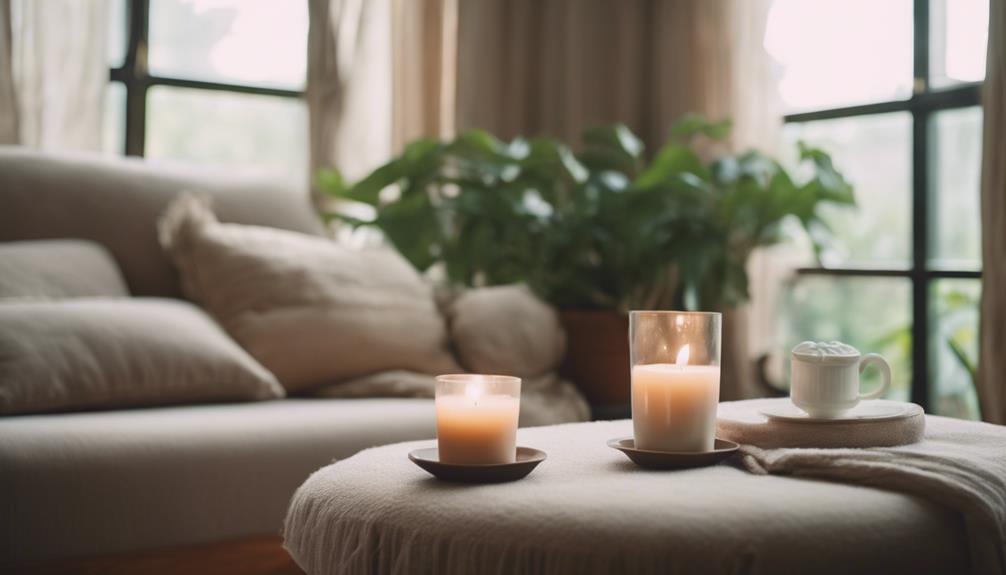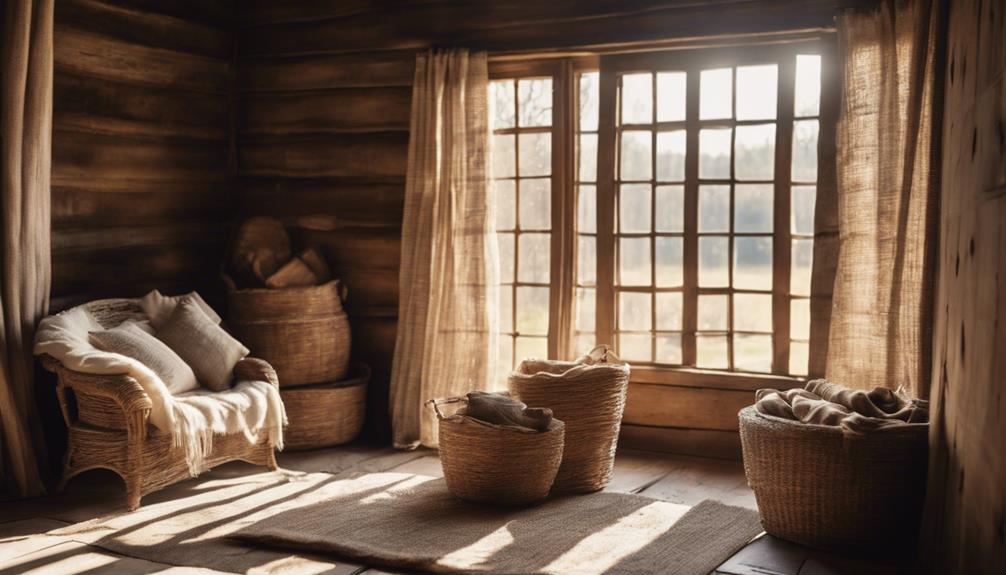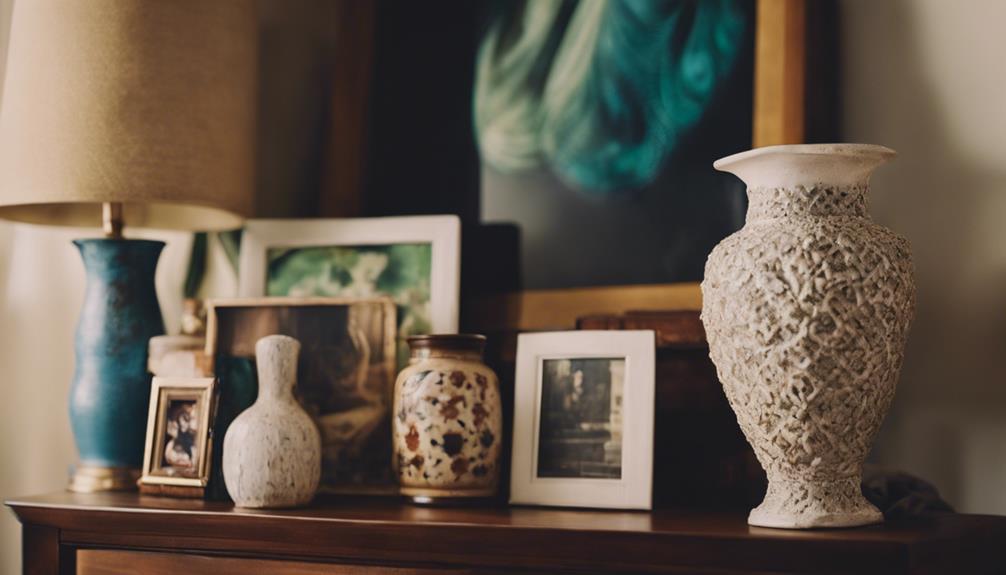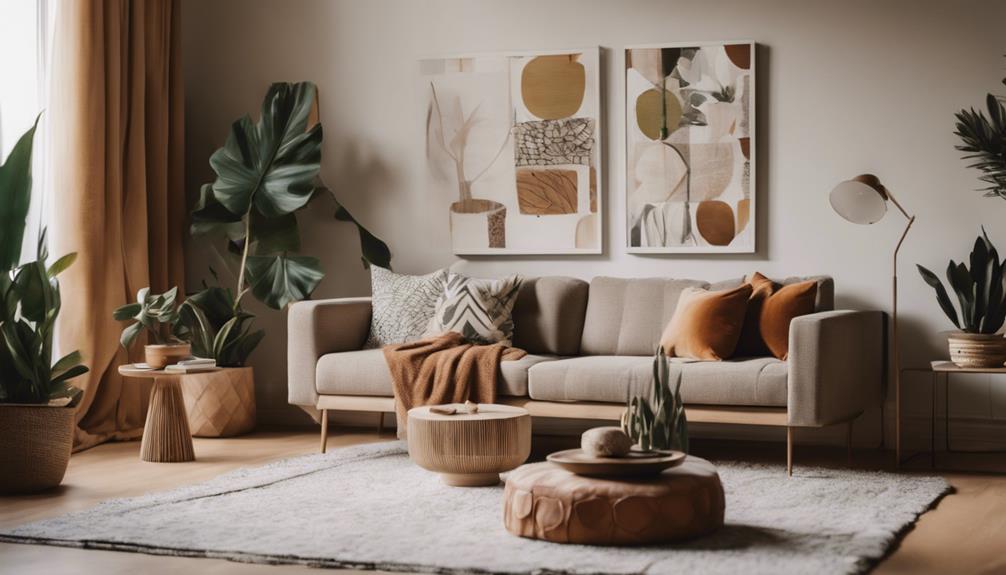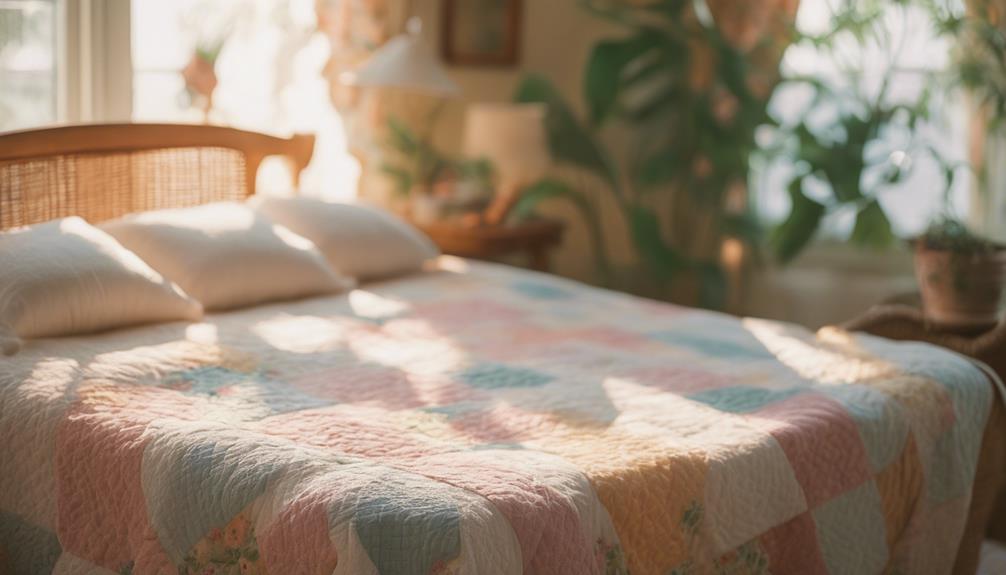You can easily create a relaxing sanctuary in your home to enhance your well-being. Start by choosing a quiet corner free from distractions. Use calming colors, like soft blues and greens, to paint your walls, and let in natural light. Incorporate indoor plants to boost your mood and add a few plush pillows for comfort. Soft, diffused lighting will set the right ambiance, and don't forget to add personal touches with mementos and favorite scents. Arrange your furniture for ease and interaction. If you want more tips on achieving the perfect sanctuary, stick around to discover even more ideas!
Key Takeaways
- Choose a quiet corner in your home and declutter to create a calming, distraction-free environment.
- Incorporate soft, soothing colors like blues and greens to promote relaxation and tranquility.
- Add indoor plants and natural materials to enhance the ambiance and improve mental well-being.
- Utilize soft lighting and calming scents to create an inviting atmosphere that fosters comfort.
Defining Your Home Sanctuary
To create your home sanctuary, carve out a quiet space that's free from distractions, clutter, and noise, allowing you to relax and practice mindfulness.
Start by selecting a cozy corner in your home where you can unwind and recharge. Choose calming colors for the walls and decor, such as soft blues and greens, to enhance the tranquil atmosphere.
Incorporating natural light is essential for creating a peaceful sanctuary. Position your space near windows or consider adding skylights to let in sunlight, which can uplift your mood and foster well-being.
Personalization is key to making this area truly your own. Include meaningful mementos, artwork, or books that resonate with you, establishing an emotional connection to your personal sanctuary.
Regularly updating your decor and organization can also help reflect your evolving interests, contributing to a sense of peace and comfort.
Incorporating Natural Elements
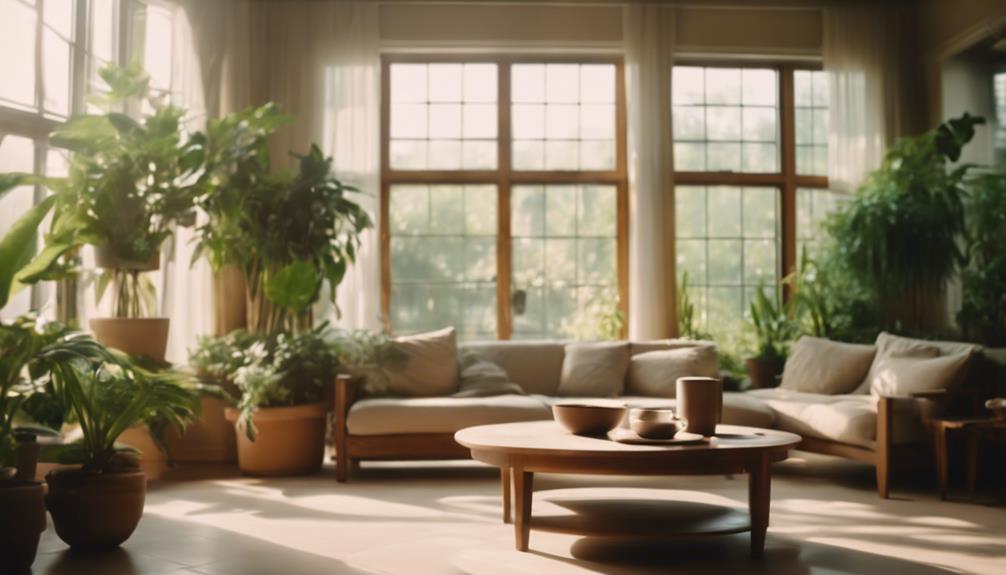
Incorporating natural elements into your sanctuary not only enhances its aesthetic appeal but also promotes a sense of calm and well-being. To create a truly relaxing sanctuary, start by introducing indoor plants and fresh flowers. These elements of nature can greatly improve your mental health by reducing stress and enhancing focus. Potted plants, in particular, bring life into your indoor spaces and help purify the air.
Utilize natural materials like wood and stone in your decor to foster a warm atmosphere. You might consider a small water feature, like a tabletop fountain, to introduce soothing sounds that enhance relaxation. Position your seating areas near windows to maximize natural light and enjoy views of outdoor spaces, which can boost your mood and alleviate anxiety.
Creating Comfortable Spaces
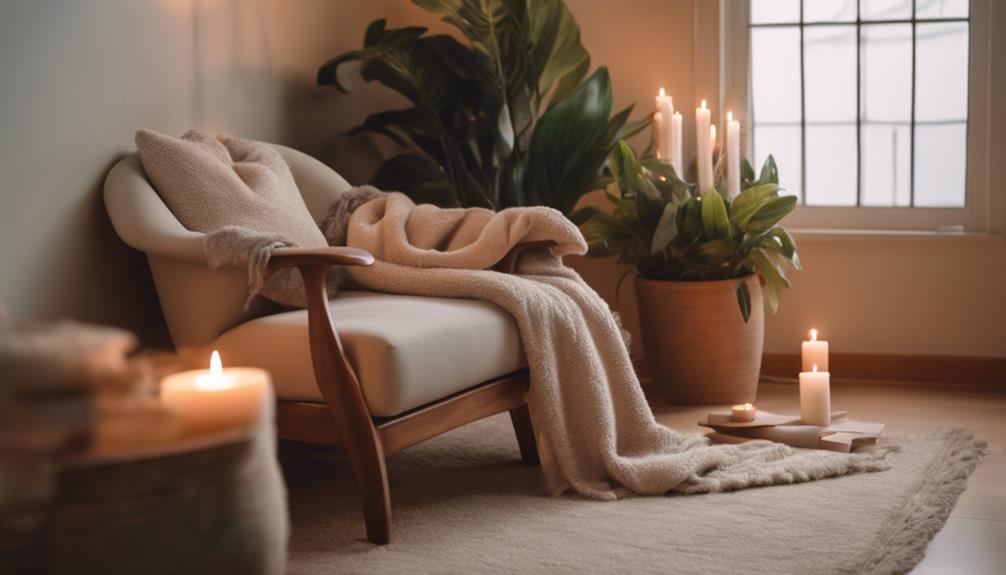
Creating comfortable spaces is essential for transforming your home into a true sanctuary where you can relax and recharge. To make your home a haven, start with plush furnishings like armchairs and chaise lounges that invite you to unwind after a long day. These pieces not only provide comfort but also encourage you to feel safe and secure in your environment.
In your living room, incorporate soft textiles such as blankets, cushions, and pillows. These elements enhance comfort and promote a cozy atmosphere, making it easier to enjoy your downtime. Choose natural materials like cotton, linen, and wool for upholstery and textiles, as they contribute to a soothing environment that feels warm and inviting.
Also, design spaces that prioritize ease of movement and accessibility. Arrange your furniture in a way that facilitates relaxation and interaction, creating a welcoming atmosphere for both you and your guests.
Enhancing Ambiance and Atmosphere
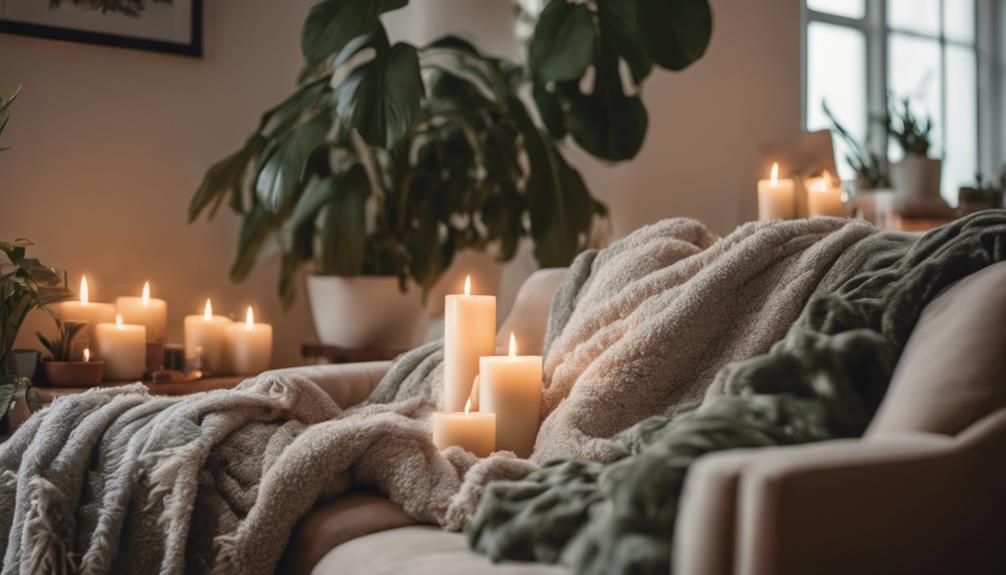
Transforming your home into a sanctuary also involves enhancing the ambiance and atmosphere to elevate your relaxation experience. Start by utilizing soft, diffused lighting sources like floor lamps and dimmer switches. This warm lighting can make you feel more at ease and create a relaxing space.
Pair this with calming color palettes—think muted earth tones or pastels—to evoke serenity throughout your area of your home.
To further enhance the ambiance, introduce soothing scents through essential oils, scented candles, or incense. These aromas can greatly impact your mood, promoting relaxation and comfort.
Additionally, focus on your sound environment; using sound machines or curated playlists with nature sounds and soft music can effectively mask external noise, fostering tranquility.
Personalizing Your Sanctuary
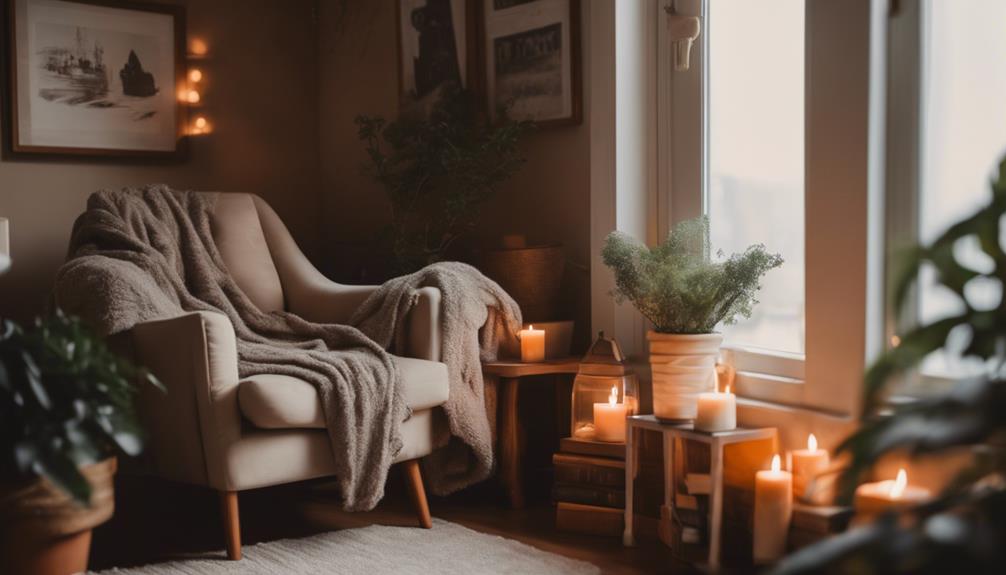
Personalizing your sanctuary means surrounding yourself with items that reflect your identity and evoke positive emotions. To create a space that truly feels like yours, consider incorporating personal mementos, such as cherished photographs or meaningful artwork. These pieces can make your sanctuary a comforting resting place, enhancing the atmosphere with emotional connections.
Additionally, think about using your favorite scents through essential oils or scented candles. Scents like lavender or chamomile can greatly affect how you feel in your space. Create dedicated areas for activities you love—perhaps a cozy reading nook or a meditation corner—to guarantee your sanctuary mirrors your interests.
To keep your sanctuary fresh and aligned with your evolving tastes, regularly update your decor with new items or seasonal changes. A vision board featuring personal goals can also inspire you and serve as a motivational focal point.
Here's a quick overview of ways to personalize your sanctuary:
| Item Type | Purpose | Example |
|---|---|---|
| Personal Mementos | Create emotional connections | Family photos, artwork |
| Scented Candles | Foster relaxation | Lavender, chamomile scents |
| Activity Areas | Reflect interests and hobbies | Reading nook, meditation corner |
Frequently Asked Questions
How to Turn Your Home Into a Sanctuary?
To turn your home into a sanctuary, choose a quiet area, add natural elements, and select comfortable furnishings. Control lighting and personalize the space with meaningful items, creating an inviting atmosphere that promotes relaxation.
How to Create a Peaceful Space at Home?
To create a peaceful space at home, you've got to balance chaos with tranquility. Choose a quiet corner, add calming colors, and surround yourself with nature to cultivate a serene atmosphere that invites relaxation.
What Is a Relaxing Sanctuary?
A relaxing sanctuary is your personal retreat designed for peace and mindfulness. It's a clutter-free space filled with natural light, comfortable furnishings, and personal touches that help you unwind and rejuvenate from daily stresses.
How Do I Make My Living Room a Sanctuary?
"Home is where the heart is." To make your living room a sanctuary, choose calming colors, add comfy furniture, maximize natural light, incorporate greenery, and control lighting for a soothing, inviting atmosphere you'll love.
Conclusion
By transforming your home into a relaxing sanctuary, you're not just creating a space; you're crafting a blissful retreat where stress evaporates faster than morning dew.
Imagine sinking into plush cushions as soft light dances around the room, and the soothing scent of lavender wraps around you like a warm hug.
Each corner radiates tranquility, making your home feel like a five-star spa, where every moment is a mini-vacation.
So go ahead, let your sanctuary work its magic!
